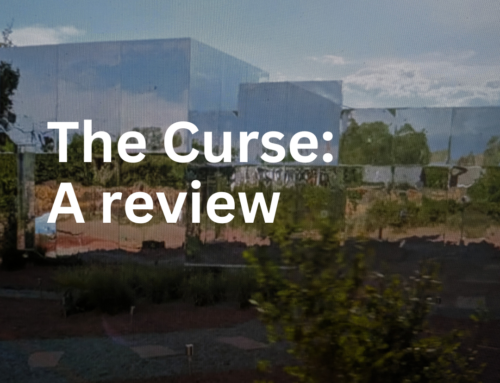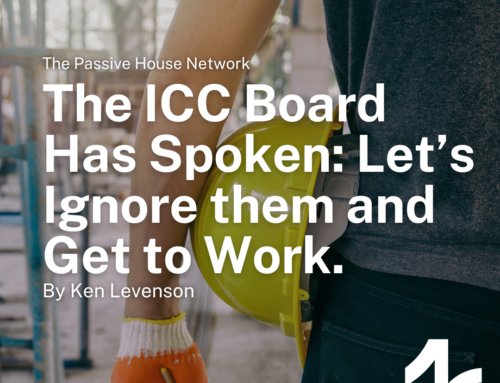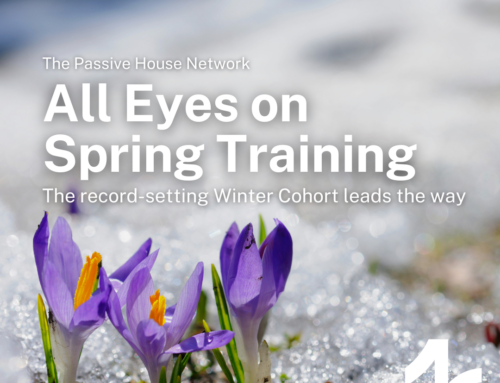2021 NAPHN Conference Program is Announced
Program to feature leading Passive House practitioners, projects, and technical innovations; and their intersection with our environmental, social, and health crises in support of sustainable communities.
Press Release
New York, NY April 15, 2021 – The North American Passive House Network (NAPHN) today announced the program for the Passive House 2021 Conference: Passive House For All. The conference will take place June 10-11 in person, in New York City, and online.
The program is organized around the idea that Passive House should serve everyone and be accessible to everyone. Sessions feature a wide, and emerging, range of projects and intersecting interests – in use, region, climate, construction type, and audience – demonstrating that Passive House can be a core tool in making sustainable communities, more equitable living conditions, higher-skilled workers, healthy populations, and climate solutions.
“We are at an inflection point. People see the interconnectedness of our environmental, health, and social crises like never before, and they want to act on it, they want to build thriving equitable sustainable communities,” says Ken Levenson, Executive Director of NAPHN, “Our conference program supports this effort and demonstrates that Passive House, in the hands of professionals, builders, developers, activists, and policymakers, can be a core strategy in making stronger, more resilient communities.”
Some highlights include:
- Small-Town EnerPHit: sustainable energy funding meets sustainable community building. A Passive House retrofit demonstrates the power of green funding to help revitalize a downtown property, provide local job training, and be a beacon of climate resilience and adaptation.
- Nuutsumuut Lelum: Passive House multifamily in service of an Indigenous community, looks at the complex intersection of native cultures, modern zoning, and affordable living, delivered with technical and artistic sophistication.
- Home on the Prairie: an American archetype remade for 2050 and beyond, tracks the contemporary technical and aesthetic evolution by a leading Midwestern Passive House practitioner, of this particular American building type, for our Anthropocene age.
- Not Your Familiar Big Box Retailer: Passive House supermarkets. Take a deep dive into this emerging building type and see how our “green retailers” like Walmart and Whole Foods, can do much, much better.
- Breaking Ground’s Betances Residences: community, affordable housing & Passive House, Reveals how a leading developer of affordable housing that addresses chronic homelessness, has enlisted Passive House to support their holistic efforts.
- Keeping it Real: the Passive House Standard meets American builders, explores contractor concerns, priorities, and how contractor training can effectively close gaps and sensibly elevate all work.
- Excellence for Everyone: Passive House examples from NYSERDA’s market transforming building program, examines several trailblazing winners of this $40 million competition that recognizes great design, construction, and operation of very low or zero carbon-emitting multifamily buildings.
- As Goes The City Of Exeter, So Goes The United Kingdom: experience Passive House acceleration The biggest Passive House developer in the UK tells the story of a national Passive House transformation, the lessons being learned, and what is on the horizon.
To increase accessibility to the conference – which includes an expo of leading manufacturers of Passive House components and providers of Passive House services – the program and expo are being presented both in-person in New York City and online. Also, the ticket pricing has been made more affordable and is supplemented with additional discounts for students, faculty, and Black, Indigenous, and People of Color (BIPOC) attendees, in support of more diverse and inclusive participation.
NAPHN encourages everyone to review the full program and register today.
# # #
About NAPHN:
The North American Passive House Network (NAPHN) is an independent national non-profit educational organization affiliated with the International Passive House Association (iPHA) and the Passive House Institute (PHI), located in Darmstadt, Germany.
NAPHN has chapters based in New Jersey (www.njpassivehouse.com), Washington DC (www.passivehousenetwork.org), the Rocky Mountain Region (www.phrockymountains.com), Minnesota (www.passivehouseminnesota.org), and Pennsylvania (www.passivehousepa.org).
NAPHN supports the widespread adoption of the international Passive House design and construction standards, building science principles and protocols, as a critical response to our climate crisis – providing unparalleled effectiveness in mitigating climate disruptions and adapting to rapidly changing environmental conditions.
NAPHN is focused on the inflection point between policy and implementation. We partner with leading stakeholders across all building sectors, including governments, professional associations, manufacturers, owners, builders, labor organizations, and educational institutions – to make the transformation complete. https://passivehousenetwork.org
About Passive House:
Passive House is an international building standard and methodology, applicable to buildings of all kinds from office buildings to hospitals, new-build and renovations, that results in a dramatic
drop in operational energy use, and more comfortable and healthy occupants – meant to aggressively mitigate our climate crisis while providing resilient adaptation.
The Passive House Standard was developed by the Passive House Institute (PHI), an independent scientific research organization, located in Darmstadt, Germany, and includes specific requirements for energy use and comfort of occupants. The Passive House Standard is being successfully applied to thousands of buildings and millions of square feet around the world, from Boston to Beijing.
The Passive House methodology starts with reducing cooling, dehumidification, and heating loads by focusing, not on gadgets and active technology, but instead on fully integrated durable passive building components, such as proper continuous thermal-bridge-free insulation, continuous airtightness, high-performance windows and doors, and ventilation that includes a high-efficiency heat/energy recovery core, carefully calculated, and all integrated with the entire architectural process of design and construction. http://www.passivehouse.com http://www.passipedia.org
View an Introduction to Passive house video: https://passivehousenetwork.org/resources/passive-house-basics/




